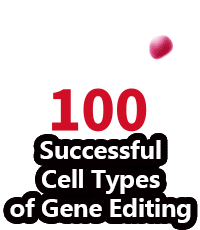Various CRISPR reagent and transfection methods were used to examine gene editing
PALM SPRINGS, California – Certain approaches for getting CRISPR gene editing machinery into cells appear work better and be more reproducible than others, according to a new analysis presented at the Association of Biomolecular Research Facilities (ABRF) annual meeting here this week.
CRISPR-based genome editing relies on creating a double-strand DNA break to form an indel that can either cause frameshift mutations and disrupt the gene or enable the uptake of a donor template sequence.
The ABRF Genome Editing Research Group (GERG) conducted a study to examine such indel formation under different CRISPR-Cas9 reagent and transfection approaches. There are various ways the CRISPR guide RNA and nuclease, typically Cas9, can be delivered into cells, which the group evaluated in its study.
As Dartmouth College's Elizabeth Sergison, the GERG chair, reported at the ABRF meeting on Monday, one of those combinations — nucleofection plus a single guide RNA — had the highest indel rates and appeared to be the most reproducible, both across labs and over time.
"The most reproducible [method] between the three sites seems to be nucleofection with a single guide RNA," Sergison said during her talk, noting that it was the best approach for two of the three sites that took part in the analysis.
In 2017, the GERG surveyed investigators using CRISPR-Cas9 to ask about their preferred reagent formats for guide RNAs and Cas9 as well as about their favored approach for delivering the machinery into cells. Ribonucleoproteins (RNP), which can have either one-part or two-part guide, were the most popular option, but delivery via plasmid, was also used.
There are benefits and drawbacks to both approaches, Sergison noted. For instance, using plasmids requires careful primer selection for Cas9, while RNPs don't have that step. Cas9 expression persists longer from a plasmid, but plasmid DNA can become randomly integrated into the genome. RNP, on the other hand, cannot integrate into the genome and is degraded within 24 hours.
The majority of survey respondents also used lipofection to get the machinery into cells, but other approaches like lentivirus or nucleofection were also used.
For this analysis, the GERG researchers used either lipofection or nucleofection to deliver the CRISPR machinery into HEK293 cells. Nucleofection, Sergison noted, has become more common with time. In particular, they delivered three gRNA and Cas9 formats including plasmid, one-part RNP, and two-part RNP. They did this for three different guide RNAs targeting different parts of the genome, did it in triplicate, and at three different lab sites.
"So it was a lot of transfecting and electroporating for us," she said.
Following editing, the samples were sent to a fourth lab for sequencing and indel analysis using the Cris.py program.
Overall, the one-part synthetic guide RNA approach seemed to work the best across all three labs, while two-part guide RNA seemed to work the worst across all three labs, though Sergison noted it worked better at some labs, as compared to others.
One site came close to 100 percent editing using one-part synthetic guide RNA, while another site reached about 60 percent editing. Nucleofection also seemed to work the best for the RNPs.
Meanwhile, plasmids delivered by lipofection had higher editing rates than plasmids delivered by than nucleofection, at all three sites.
These results largely reflected what GERG reported last year in a similar analysis, Sergison noted. They had expected better performance this year, since the analysis included the same labs and same individuals and they thought that experience would have translated to higher editing rates, "but that doesn't seem to be the case," she added. "It does seem to be pretty consistent year over year."
Still, she noted there was a bit of variability between the sites, though they are not yet sure why.
"We know that indel rates really varied across methods, so if you're trying really hard to knock out a gene and it's not working, perhaps try a different method," she said. "You might get more success that way."
Story Source: Genome Web.
Ubigene Biosciences is co-founded by biological academics and elites from China, the United States, and France. We are located in Guangzhou Science City, which serves as a global center for high technology and innovation. Ubigene Biosciences has 1000㎡ office areas and laboratories, involving genome editing, cell biology technology, and zebrafish research. We provide products and services for plasmids, viruses, cells, and zebrafish. We aim to provide customers with better gene-editing tools for cell or animal research.
We developed CRISPR-U™ and CRISPR-B™ (based on CRISPR/Cas9 technology) which is more efficient than general CRISPR/Cas9 in double-strand breaking, CRISPR-U™ and CRISPR-B™ can greatly improve the efficiency of homologous recombination, easily achieve knockout (KO), point mutation (PM) and knockin (KI) in vitro and in vivo.
Genome Editing Platform
——Focusing on the Application of CRISPR-U™ and CRISPR-B™ Gene Editing Technology
1. Provides various types of gene-editing vectors for different species.2. Provides different virus packaging services, including lentiviruses, adenoviruses and adeno-associated viruses.3. Provides high-quality services for gene knockout, point mutation and knockin cell lines.
Cell Biology Platform
——Focusing on primary cell
1. Provides over 400 types of primary cells.2. Provides culture strategies and related products for different cell types.3. Provides cell biology-related services such as cell isolation, extraction and validation.
